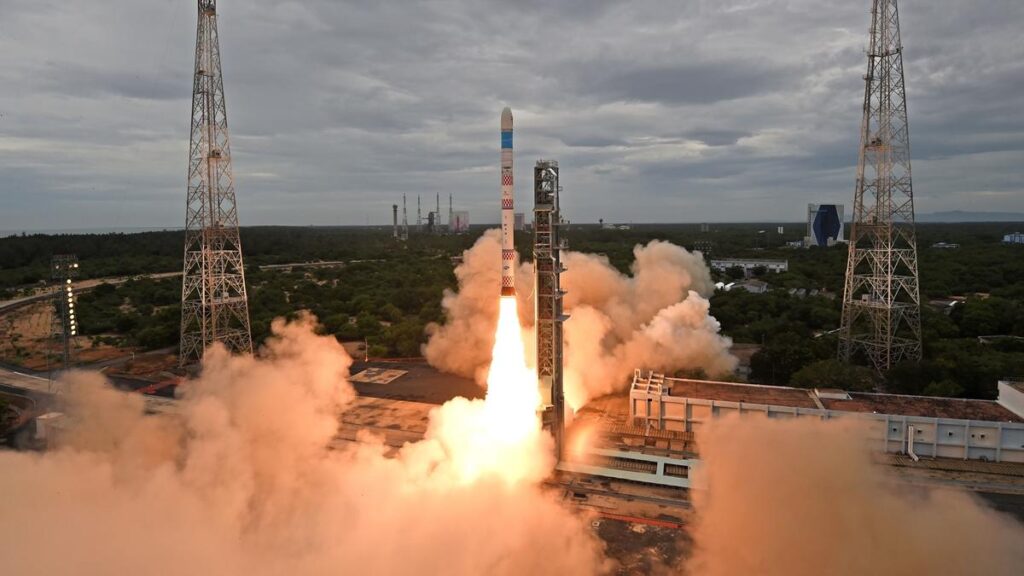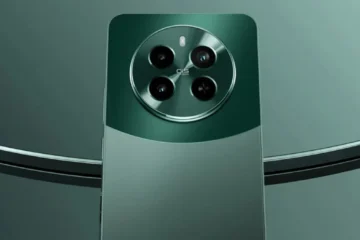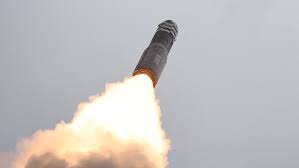With this, ISRO’s earth observation satellite EOS-07 and two co-passenger satellites — Janus-1 and AzaadiSat2 — developed by start-ups will be placed in a 450-km circular orbit around the Earth.

After the second development flight of the Small Satellite Launch Vehicle (SSLV-D2) successfully placed three satellites in a 450 km circular orbit around the earth, the vehicle joined Isro’s fleet of three rockets – the workhorse PSLV, the heavier cryogenic GSLV, and the heaviest launcher, LVM3, which is currently being human-rated for the Gaganyaan mission.
“Congratulations, India’s space community. The Small Satellite Launch Vehicle (SSLV) is a new launch vehicle that, in its second try today, accurately delivered the EOS-07 satellite in its target orbit… Additionally, two satellites were positioned in the required orbit. “Congratulations to all three satellite teams,” said S Somanath, chairman of the Indian Space Research Organisation (Isro), following Friday’s 9.18 a.m. launch from the first launch pad at the country’s lone spaceport, Sriharikota, Andhra Pradesh.
After the event, Union Home Minister Amit Shah praised the team. He tweeted, “Congratulations, team @isro. With the successful launch of the SSLV-D2/EOS-07 mission at the beginning of its Amrit Kaal, India establishes history. This launch permits India to launch items weighing up to 500 kilograms into Low Earth Orbit, paving the stage for independent space operations.”
When the final liquid propellant-based, velocity-trimming module – created for correctly putting the satellites in orbit – reached the intended altitude, the scientists waited in silence for a few moments, but the satellites did not begin to separate. The first satellite, EOS-07, separated 801 seconds instead of 785 seconds after flight, while Janus -1 and Azadisat 2 separated 923 and 923 seconds after flight, respectively. There are typically minor variations in each mission.
The first flight of the launch vehicle on August 7, 2022, despite the three solid stages working as expected, was unable to place the satellites in the desired orbit. Within six months, a failure analysis was performed and modifications were made to the equipment bay, separation mechanism, and on-board system for identifying malfunctioning sensors. Before the second launch of the new launch vehicle, five new pieces of gear were evaluated to ensure its success.
“SSLV-D1 made its maiden flight,” We had a narrow miss due to a lack of velocity, and we are pleased to report that we analysed the problems in SSLV-D1, identified the corrective action implemented at a rapid pace, qualified all those new systems, and conducted extensive simulations and studies to ensure that the vehicle will be successful this time,” said Somanath.
According to him, the fact that the satellites perfectly reached their planned orbits demonstrated that the new, cost-efficient guidance and navigation technology utilised in the launch vehicle as well as the electronics were functional.

Bimal Mardi is a Professional Content Writer. He works in First Santal Broadcast Network TV/ News channel in India. Bimal Mardi writes about Technology, Education and Tech Product Reviews



